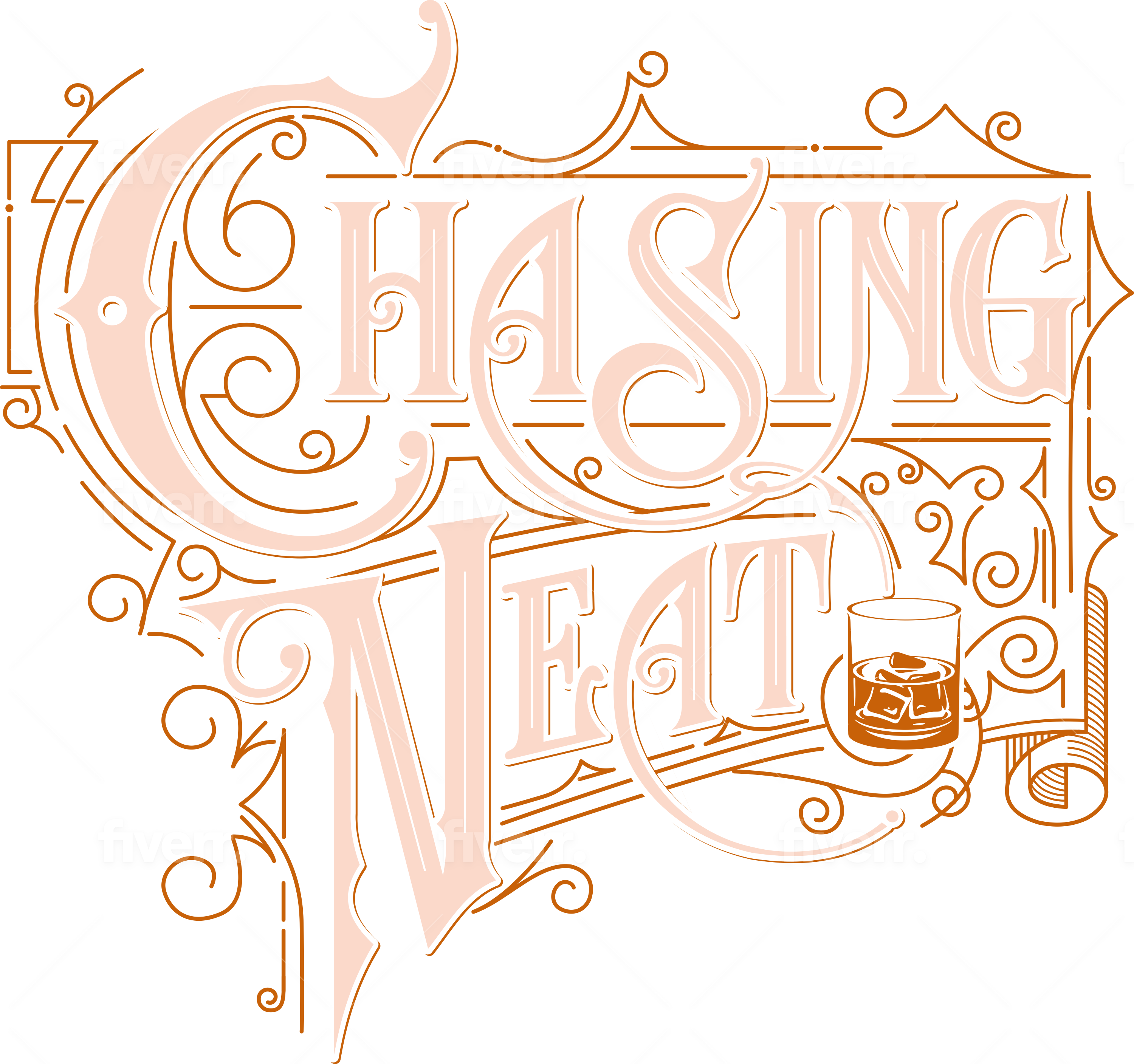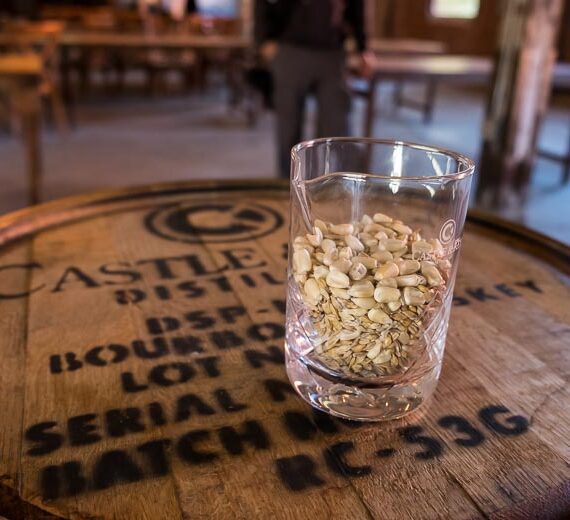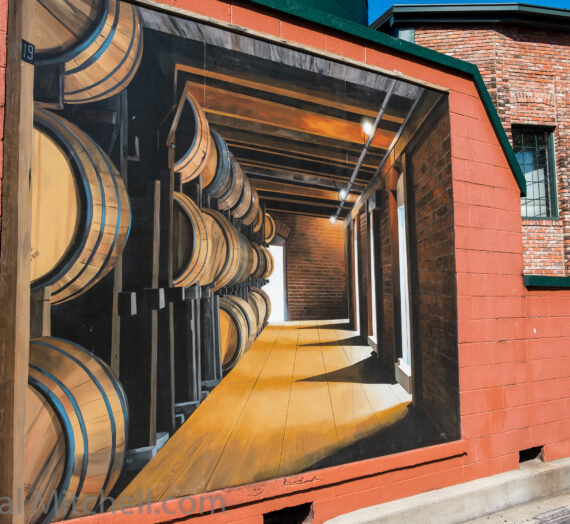There are several designations that fall under the umbrella term of “Whisk(e)y” and most have their own specific set of requirements that must be met before their spirit can be called by that specific name.
At the very least, to be recognized as a “whisk(e)y” the spirit has to follow four rules:
1. It has to be made from 100% fermented grains
2. It has to be distilled below 190 Proof
3. It has to be put into an oak container
4. It has to be bottled at a minimum of 80 Proof
The following is a list of the most popular types of whisk(e)ys:
Bourbon:
There are six things that make a Bourbon a Bourbon:
1. It has to be produced in the United States of America (not just Kentucky)
2. It has to be made from at least 51% corn
3. It has to be distilled at 160 Proof or below
4. It has to be put into a new, charred oak container
5. It has to be put into a container at 125 Proof or below
6. It can not contain any added substance other than water
Kentucky Bourbon:
To be called Kentucky Bourbon it has to be produced, then aged for at least one year in the state of Kentucky.
Straight Bourbon:
To be called Straight Bourbon it must be aged for a minimum of two years. If it is aged less than four years, it must have an age statement on the label.
Irish:
Irish whiskey has less restrictions that do most categories of whisk(e)y
1. It has to be produced in Ireland
2. It has to be made from cereal grains (Cereal grains are the seeds that come from grasses such as wheat, millet, rice, barley, oats, rye, triticale, sorghum, and maize (corn))
3. It has to be fermented by the action of yeast
4. It has to be distilled to a maximum of 189.6 Proof
5. It has to be aged in Ireland in wooden casks for at least three years (can’t exceed 700 liters)
Malt Irish Whiskey:
This whiskey is made from only water and malted barley at a single distillery and made in pot stills.
Pot Still Irish Whiskey:
Is made from malted and unmalted barley distilled only in a pot still.
Grain Irish Whiskey:
Is made in a continuous distillation (column still) and from unmalted grains
Blended Irish Whiskey:
Is a blend between whiskeys made in a pot still and made in a column still.
Japanese:
This one really does not have a “legal” definition, that said, but generally follows the style and production methods of Scotch.
Scotch:
There are two types of Scotch whisky and three types of blended Scotch whisky, both follow the six points below.
1. It has to be produced in Scotland
2. It has to be made from malted barley (but may contain other cereal grains)
3. It’s sugar conversion must use natural enzymes from malted barley
4. It has to be put into oak casks no larger than 700 liters (185 gallons)
5. It has to be aged in Scotland in oak casks for at least three years
6. It can not contain any added substance other than caramel coloring
Single Malt:
Is made from only water and malted barley at a single distillery and made in pot stills.
Single Grain:
Is made at a single distillery and is made with multiple grains (malted or unmalted) in addition to water and malted barley. The word “single” refers to the fact it comes from one distillery, and not referring to the number of grains used.
Blended Malt Scotch:
Is a blend of two or more single malt Scotch whiskies from different distilleries.
Blended Grain Scotch:
Is a blend of two or more single grain Scotch whiskies from different distilleries.
Blended Scotch:
Is a blend of one or more single malt Scotch whiskies with one or more single grain Scotch whiskies.
Canadian:
Canadian whisky is one of the most “flexible” categories of whiskies on our list. One key difference is that it is the only one that allows flavoring to be added, caramel coloring can also be added. Below are the three criteria to be called a Canadian Whisky.
1. It has to be produced in Canada
2. It has to be made from cereal grains
3. It has to be aged in Canada in wooden barrels for at least three years.
Tennessee:
This category meets all the requirements to be called a Bourbon, except that the distilled spirits are filtered through charged Maple before it is placed into barrels. This is generally referred to as the Lincoln County Process. This process does not add any flavors but actually subtracts items that can add to flavor profiles. The State of Tennessee House Bill 1084 passed in 2013 states that in order to be recognized as Tennessee whiskey it has to meet the following:
1. It has to be produced in Tennessee
2. It has to be made from at least 51% corn
3. It has to be distilled at 160 Proof or below
4. It has to be filtered through maple wood charcoal before barreling
5. It has to be put into a container at 125 Proof or below
6. It has to be put into a new, charred oak container
Wheat/Rye/Malt:
All the rules of making a Bourbon are followed to make these types of whiskies, except that instead of 51% corn in the mash bill, they use 51% of Wheat, Rye or Malt.
Moonshine:
There is no legal definition for this category of whiskey. It can be made with any combination of grains, or fruit for that matter, it is all up to the individual moonshiner!





What’s On The Label & What Does It All Mean? – Chasing Bourbon Neat
[…] If the bottle of spirits, that you are holding, does not meet the above criteria then you have one of the many types of whiske(y)s and you can read the differences in this post. […]